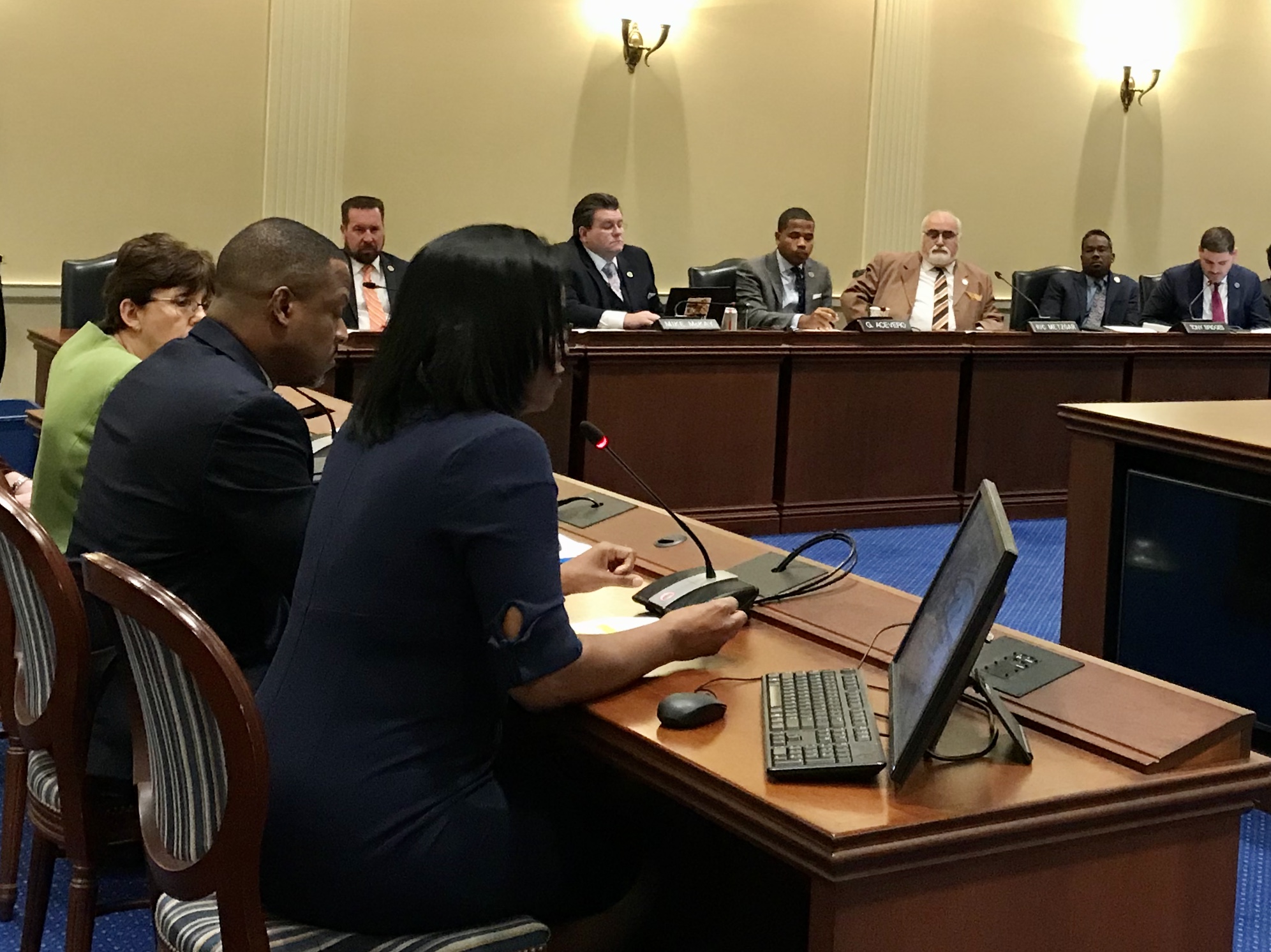Ahead of School Construction Hearing, Officials Lament Funding Squeeze

Ahead of a hearing on a multibillion-dollar plan to fund backlogged school maintenance and construction projects in Maryland, delegates heard Tuesday from officials on the frontlines of school construction struggles.
Strengthening the state’s school infrastructure is a top priority in both chambers, and the House Appropriations Committee will consider a bill on the plan Thursday afternoon.
The question is not if the school construction proposal will pass, but whether legislators should consider tweaking the proposal, said House Appropriations Chairwoman Maggie L. McIntosh (D-Baltimore City).
“This is House Bill 1 – and that means the bill is going to pass. And we can amend it, but that means it’s going to pass,” she told school leaders and her committee.
The bill would allow the Maryland Stadium Authority to issue up to $2.2 billion in bonds to fund school construction projects in the state, in addition to the state’s annual capital funding. A companion measure is cross-filed as Senate Bill 1 and is certain to pass out of that chamber.
Gov. Lawrence J. Hogan Jr. (R) has also introduced a bill authorizing $2.2 billion in Stadium Authority bonds, though the measures differ in other ways.
In a briefing before the Appropriations Committee Tuesday, school chiefs outlined difficulties they face in building new schools to keep up with growing, changing student populations while trying to maintain old schools with intensive infrastructure needs.
“Our aging facilities definitely need to be renovated and upgraded, but that takes a backseat to filling the seats of our new enrollees,” Frederick County Superintendent of Schools Theresa R. Alban said.
Frederick County, the state’s second-fastest growing school system, has been adding more than 1,000 students ― the equivalent of an entire middle school — each year for the last five years. Now more than 40% of Frederick County public schools are over capacity.
To cope, Frederick County has forward-funded the state share of school construction projects, and has needed to defer maintenance to build space for additional students.
Deferred maintenance creates extra costs for the school system, Alban told the committee.
Baltimore County Schools Superintendent Darryl L. Williams agreed.
“Since there are insufficient capital funds to replace failing infrastructure, there is an increased burden on maintenance staff to either keep failing equipment limping along well beyond its life expectancy or increase the maintenance budget within the operating budget,” Williams said.
Under the state’s current funding levels, Baltimore County would have to wait five years to receive funding for $220 million in projects identified as current “critical needs,” he said.
Baltimore City Public Schools CEO Sonya Santelises said that Baltimore has built 14 new schools under the 21st Century Schools Program, which is funded through the Stadium Authority. And the city expects to build or fully renovate a total of 28 school buildings by 2023.
Santelises said the city is “thrilled” with the 14 new schools built, but the district’s overall 153-school building portfolio still consists of “large, outdated, underutilized buildings that are in poor condition.” She said that a 2016 report identified more than $200 million in annual capital funding needs for school maintenance, but that Baltimore public schools receive an average of less than $50 million a year total from the state and city.
School chiefs said their districts try to set aside money for preventative maintenance, but an emergency repair in an older building can override the need for preventative maintenance at new ones.
School leaders are also concerned with steep increases in construction costs.
Shawn Matlock, director for the Department of Capital Programs for Prince George’s County Public Schools, said there has been “hypergrowth” in school construction costs.
A study five years ago about replacing High Point High School in Prince George’s suggested it would cost $115 million; when that study was updated last year the estimated cost was $218 million.
Seth Adams, director of the Department of Facilities Management for Montgomery County Public Schools, said an HVAC replacement project in his county now costs more than three-and-a-half times what it did three years ago. Adams suggested that state lawmakers explore ways for local school systems to bundle similar projects together between county school systems.
Del. Jefferson L. Ghrist (R-Upper Shore) said he wants his committee to consider removing prevailing wage requirements from school construction projects to decrease costs.
Lawmakers are also considering alternative financing programs for school construction this year.
Prince George’s County is in the process of launching a public-private partnership program to construct at least 10 schools in the county.
Both the legislature’s and the governor’s school construction proposals provide funding and support for that program, and Hogan’s bill would expand public-private partnerships statewide.
Matlock said Prince George’s County will focus on building middle schools through the public-private partnership program, in part to relieve overcrowding in those schools and also to make space in existing elementary schools for expanded pre-kindergarten programs.
Editor’s Note: This story was updated to correct information about the 21st Century Schools Project in the city of Baltimore.




 Creative Commons Attribution
Creative Commons Attribution